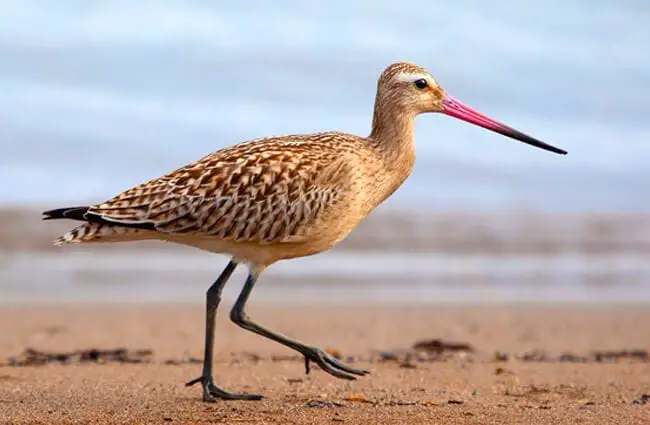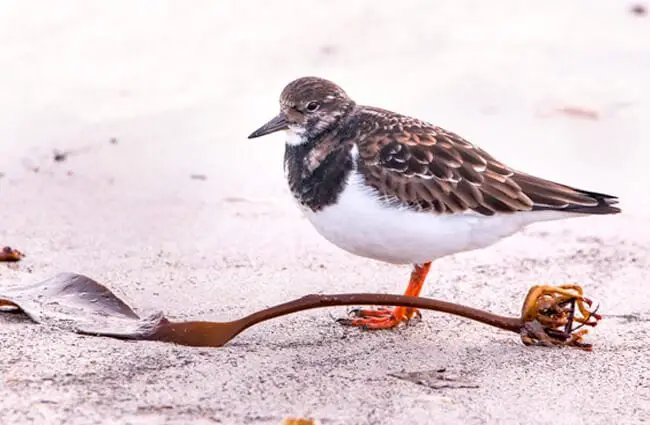An Introduction to Sandpipers
Sandpipers are birds whose very name evokes images of shorelines, gentle waves, and elegant creatures darting along the water’s edge. These seemingly simple birds possess fascinating complexity, a rich evolutionary history, and a vital role in the ecosystems they inhabit. This guide explores their biology, behavior, and ecological significance, from identifying different species to understanding their incredible migratory feats.

What are Sandpipers?
The term “sandpiper” does not refer to a single species but to a diverse group of wading birds in the family Scolopacidae. This family includes more than 90 species, ranging from the tiny Least Sandpiper to the larger Bar-tailed Godwit. They are characterized by long legs, slender bills, and a preference for foraging in soft sediments along shorelines.
Physical Characteristics
Sandpipers typically have streamlined bodies that aid in both flight and shallow-water navigation. Their plumage is mottled in shades of brown, gray, and white, providing effective camouflage against sandy or muddy substrates. Bill length varies by species: some have short, straight bills suited for surface feeding, while others possess longer, curved bills for probing deeper into mud. Leg length is also a key adaptation, allowing them to wade in varying water depths without fatigue.
Habitat and Distribution
Sandpipers are found on every continent except Antarctica. Their habitats are as varied as the species themselves. Many are true shorebirds, living on sandy beaches, mudflats, saltmarshes, and estuaries. Others venture inland, frequenting freshwater wetlands, grasslands, and even alpine meadows. Distribution is strongly influenced by migration patterns, with many species breeding in the Arctic and sub-Arctic and wintering in warmer climates.
Diet and Foraging Behavior
Sandpipers are opportunistic feeders, consuming a wide range of invertebrates, including insects, crustaceans, worms, and mollusks. Their foraging techniques are diverse. For example, the Sanderling runs rapidly and pecks at the surface of the sand to catch prey, while the Dunlin probes deep into mud, feeling for food with its bill. Food availability is a major driver of sandpiper distribution and abundance.

Reproduction and Life Cycle
Sandpipers breed during spring and summer. Most species are monogamous, forming pair bonds that may last several years. They build simple ground nests hidden in vegetation. Females lay clutches of four to six eggs, which both parents incubate. Sandpiper chicks are precocial, meaning they are relatively mature at hatching and can walk and feed themselves soon after emerging. Juvenile sandpipers grow rapidly before reaching sexual maturity.
Migration
Sandpipers are renowned for their remarkable migratory journeys. Many species travel thousands of miles between breeding and wintering grounds. The Bar-tailed Godwit holds the record for the longest nonstop flight by any bird, covering over 7,000 miles from Alaska to New Zealand without stopping for food or rest. These journeys require exceptional physiological adaptations, including the ability to store large amounts of energy and navigate accurately across vast distances. Migration routes are shaped by a combination of innate genetic programming and learned experience.
Sandpipers and the Ecosystem
Sandpipers play vital roles in their ecosystems. As predators of invertebrates, they help regulate those populations. They also serve as important prey for larger predators such as raptors and other shorebirds. Foraging activity can significantly affect sediment composition and nutrient cycling, making sandpipers useful indicators of ecosystem health.

Sandpipers and Humans
Historically, some coastal communities have harvested sandpipers for food. Today, habitat loss, pollution, and overharvesting threaten many species, leading to several being listed as threatened or endangered. Conservation efforts such as habitat restoration and sustainable management are essential for their long-term survival. Birdwatchers and nature enthusiasts also help raise awareness and support conservation initiatives.
Identifying Common Sandpiper Species
While a complete guide to all 90+ species is beyond this article, here are a few common sandpipers and their key identification features:
- Sanderling: Small, pale bird that runs quickly and has a white belly.
- Dunlin: Medium-sized shorebird with a slightly downcurved bill and a black belly patch in breeding plumage.
- Least Sandpiper: Very small shorebird with a short, straight bill and a yellowish base to the tail.
- Bar-tailed Godwit: Large shorebird with a long, slightly upturned bill and a barred tail pattern.
Sandpiper Behavior
Sandpipers display diverse behaviors. Many are highly social, forming large flocks during migration and winter. They engage in elaborate courtship displays that include vocalizations, wing movements, and aerial acrobatics. Their ability to detect prey hidden beneath sand or mud relies on specialized receptors in their bills.

Advanced Topics for Aspiring Zoologists
Researchers studying sandpipers focus on several promising areas: the genetic basis of migration, physiological adaptations enabling long-distance flight, climate change impacts on populations, gut microbiota’s role in health and performance, and stable isotope analysis to track movements and identify key feeding grounds.
Encountering a Sandpiper in the Wild
If you spot a sandpiper, observe it from a distance and avoid disturbing its behavior. Do not feed or approach the bird, as this can disrupt its natural foraging patterns. Keep pets on a leash to prevent them from harassing the bird. If you suspect a sandpiper is injured or ill, contact a local wildlife rehabilitation center.
Caring for Sandpipers in Captivity
Sandpipers are rarely kept in captivity, but when they are, specialized knowledge and facilities are required. They need spacious enclosures that mimic natural habitats, including access to soft substrates for foraging. Their diet should include a variety of invertebrates and be supplemented with vitamins and minerals. Enrichment such as simulated tidal cycles and varied foraging challenges promotes physical and psychological well-being. Strict hygiene protocols prevent disease spread.

Interesting Facts About Sandpipers
- Some sandpipers can fly nonstop for over 7,000 miles.
- They possess a unique ability to detect prey hidden beneath sand.
- Bill receptors sense vibrations and chemical cues.
- Many species use celestial cues and the Earth’s magnetic field during migration.
- Sandpiper flocks can contain thousands of individuals.

Conclusion
Sandpipers are remarkable birds with unique adaptations, complex behaviors, and essential ecological roles. Their impressive migratory journeys and contributions to coastal ecosystems make them a source of fascination and a priority for conservation. By learning more about these fascinating creatures, we can better appreciate their importance and support efforts to protect them for future generations.

![Red Angus Closeup of a beautiful Red Angus cowPhoto by: U.S. Department of Agriculture [pubic domain]https://creativecommons.org/licenses/by/2.0/](https://animals.net/wp-content/uploads/2020/03/Red-Angus-4-238x178.jpg)




![Red Angus Closeup of a beautiful Red Angus cowPhoto by: U.S. Department of Agriculture [pubic domain]https://creativecommons.org/licenses/by/2.0/](https://animals.net/wp-content/uploads/2020/03/Red-Angus-4-100x75.jpg)

